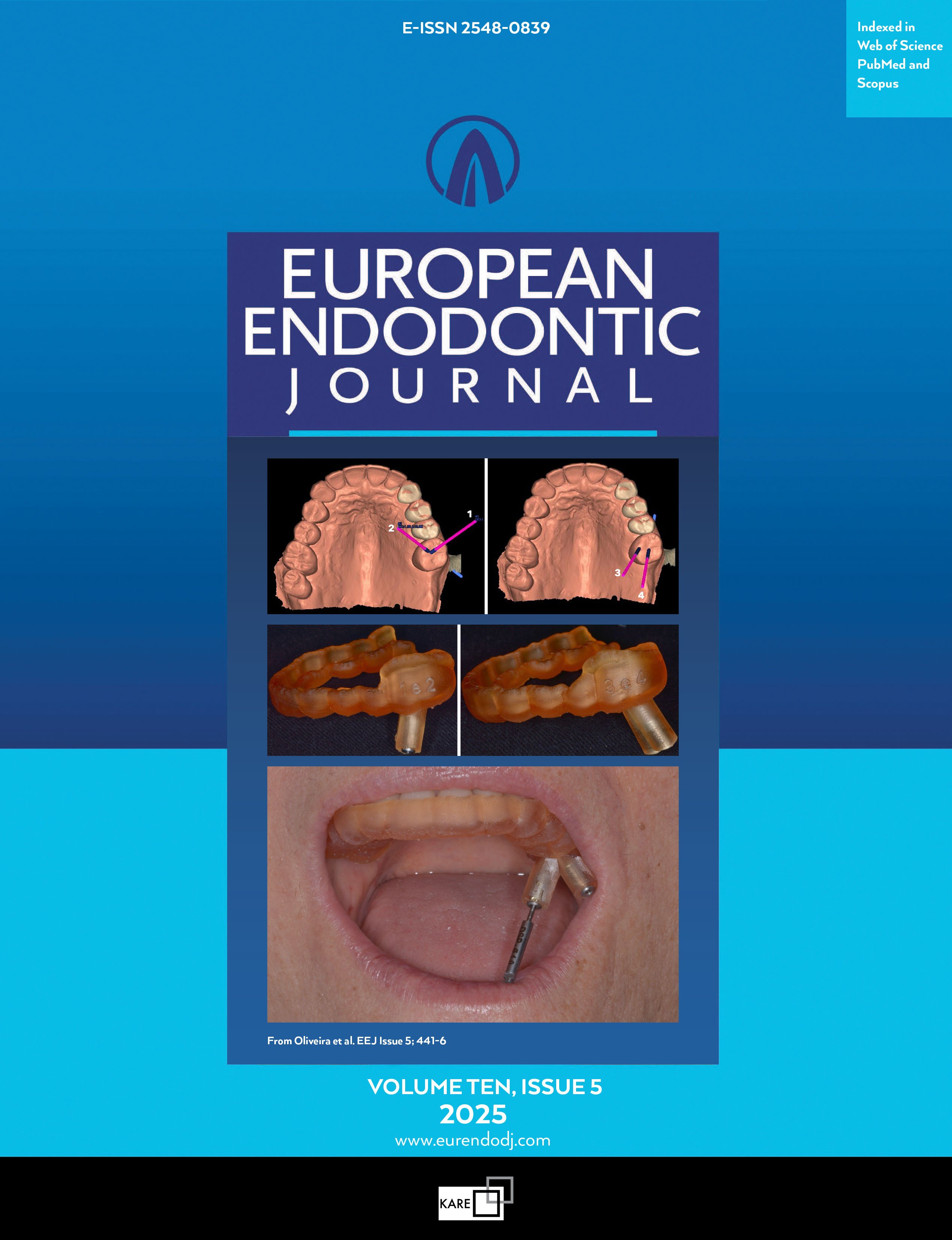Metrics
2024 IMPACT FACTOR
5 year Impact Factor
Eigenfactor Score
2024 CiteScore
Journal Citation Reports
(Clarivate 2025, JIF Rank)
Methacrylate Resin Adhesion in Root Canals Conditioned with Phosphoric Acid and Ethylenediaminetetraacetic Acid
Peter M. Di Fiore1, Jeffrey G. Phebus2, Van T. Himel3, Waldemar G. De Rijk41Department of Endodontics, University of Texas School of Dentistry, Houston, USA2Department of Endodontics, University of Tennessee College of Dentistry, Memphis, USA
3Department of Endodontics, Louisiana State University School of Dentistry, New Orleans, USA
4Department of Biomedical Materials Science, East Carolina University School of Dental Medicine, Greenville, USA
Objective: The purpose of this study was to determine the ability of a methacrylate resin dentin bonding agent to adhere to the dentin surfaces of prepared and conditioned root canals with either 32% phosphoric acid (PA) or 17% ethylenediaminetetraacetic acid (EDTA).
Methods: Prior to the application of the methacrylate resin, the root canals of 54 intact, caries-free, sin- gle-rooted, de-crowned, extracted human maxillary incisor and canine teeth were endodontically prepared and conditioned with either 32% PA or 17% EDTA or with distilled water as the unconditioned control. The resin-treated roots were cross-sectioned at three levels and scanning electron microscope (SEM) imaged for circumferential views of the root canals at 60-90× magnification and site-specific views at 250× magnification, and then randomly coded for independent and blind evaluation by four calibrated examiners. The circumfer- ential surface of the root canals that showed no resin adhesion were digitally measured and subtracted from the digitally measured total root canal circumference, and resin adhesion was expressed as a percentage of the circumference.
Results: The mean percentages of resin adhesion were 97% for the PA group, 94% for the EDTA group, and 76% for the control group. There were statistically significant differences among the PA, EDTA, and control groups.
Conclusion: Root canals conditioned with 32% PA or 17% EDTA had more resin adhesion than unconditioned root canals. Root canals conditioned with 32% PA had more resin adhesion than those conditioned with 17% EDTA.
Manuscript Language: English
(2987 downloaded)


